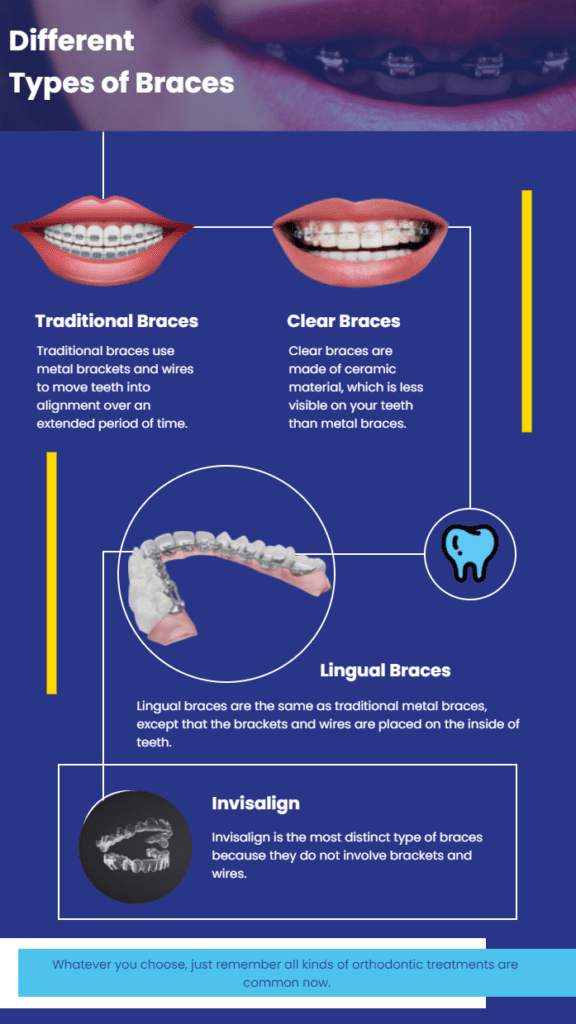Leading Tips for Picking the most effective Cumming Orthodontist for Braces and Aligners
Leading Tips for Picking the most effective Cumming Orthodontist for Braces and Aligners
Blog Article
Comprehensive Overview to Orthodontics Procedures for Correcting Oral Misalignments
In the realm of orthodontics, the trip to accomplishing a flawlessly aligned smile involves a myriad of treatments customized to remedy oral imbalances. From conventional braces to invisible aligners and even surgical options, the area of orthodontics supplies a range of remedies to attend to differing levels of dental irregularities. Recognizing the complexities of each treatment, including their mechanisms, advantages, and prospective disadvantages, is essential in making educated decisions concerning one's orthodontic treatment. As we browse through the comprehensive guide to orthodontic procedures for remedying oral misalignments, the intricate details of each approach will unfold, clarifying the path toward a unified and functional dental placement.
Orthodontic Procedures Review

In enhancement to clear aligners and conventional dental braces, orthodontists may additionally recommend other interventions like headgear, palatal expanders, or retainers to attend to details placement problems (aligners). These procedures are tailored per individual's one-of-a-kind demands and might entail a mix of therapies to accomplish the desired outcomes. Normal adjustments and monitoring are important components of orthodontic therapy to ensure development gets on track and to make any type of essential alterations along the method. By undertaking orthodontic treatments, clients can not only achieve a straighter smile yet additionally enhance their total dental wellness and feature.
Conventional Braces: Exactly How They Function
When considering orthodontic therapies for dental imbalances, typical dental braces stand out as a tried and true approach for fixing teeth placing. Standard braces include brackets, cords, and bands that collaborate to apply continuous pressure on the teeth, slowly moving them into the desired alignment. The brackets are affixed to the teeth utilizing a special adhesive, and the cables are threaded through the brackets. By changing the stress of the cords, orthodontists can regulate the instructions and force applied to each tooth, directing them right into proper positioning with time.
As pressure is used to the teeth via the braces, the bone bordering the teeth is improved to sustain the new tooth settings. People will certainly need regular changes at the orthodontist's office to make sure the dental braces continue to apply the proper stress for effective teeth movement.
Undetectable Aligners: Advantages And Disadvantages
Unnoticeable aligners offer a hassle-free and discreet choice to conventional braces for fixing here are the findings dental misalignments. These clear, customized trays are essentially invisible when worn, making them an attractive alternative for individuals seeking a much more visually pleasing orthodontic therapy. Among the main advantages of unnoticeable aligners is their removability, permitting much easier upkeep of oral health contrasted to conventional braces. People can eliminate the aligners before consuming or brushing their teeth, reducing the danger of food obtaining stuck in the home appliance and simplifying the cleaning process.

Surgical Orthodontic Options
Surgical interventions in orthodontics existing viable choices for addressing complex dental misalignments that may not be successfully resolved through conventional orthodontic treatments. While invisible aligners and conventional braces can fix numerous orthodontic problems, specific situations need surgical treatment to accomplish ideal results. Surgical orthodontic choices are usually suggested for serious malocclusions, considerable jaw inconsistencies, and situations where the underlying bone framework requires adjustment to accomplish appropriate alignment.
One typical surgical orthodontic procedure is orthognathic surgery, which involves repositioning the jaws to correct functional issues such as difficulty speaking or chewing. This surgery is commonly executed in collaboration with an orthodontist who assists straighten the teeth prior to and after the treatment. Surgical orthodontics might also include procedures to expose impacted teeth, remove excess gum cells, or improve the jawbone to develop a more harmonious facial profile.
Before considering surgical orthodontic options, patients undergo a comprehensive evaluation to identify the requirement and possible advantages of such treatments. orthodontics. While surgery may seem complicated, it can substantially boost both the function and visual appeals of the smile in situations where traditional orthodontic therapies fail
Retainers and Post-Treatment Care

Failure to comply with post-treatment treatment guidelines can result in relapse, where the teeth slowly move back in the direction of their original positions. Constant retainer wear, great dental hygiene, and regular dental examinations are crucial for maintaining the outcomes attained via orthodontic surgical procedure and guaranteeing the long-term stability of the corrected dental alignment.
Conclusion
In conclusion, orthodontic procedures offer numerous alternatives for correcting dental misalignments. Surgical orthodontic choices are offered for much more severe imbalances. In general, orthodontic treatments can successfully improve oral wellness and aesthetic look.
As we browse with the comprehensive overview to orthodontic procedures for correcting oral misalignments, the detailed information of each technique will certainly unfold, shedding light on the course toward a functional and unified dental placement. - aligners
One of the most usual orthodontic treatments is the usage of braces, which are composed of steel braces and walk in dental care wires that use gentle stress to gradually change teeth into the desired placement.When taking into consideration orthodontic treatments for oral misalignments, typical braces stand out as a reliable method for remedying teeth positioning. Furthermore, unseen aligners may not be appropriate for complex orthodontic problems that require more considerable teeth activity, as they are normally recommended for moderate to modest instances. Retainers are tailor-made orthodontic tools developed to hold teeth in their dealt with settings after the conclusion of orthodontic treatment.
Report this page